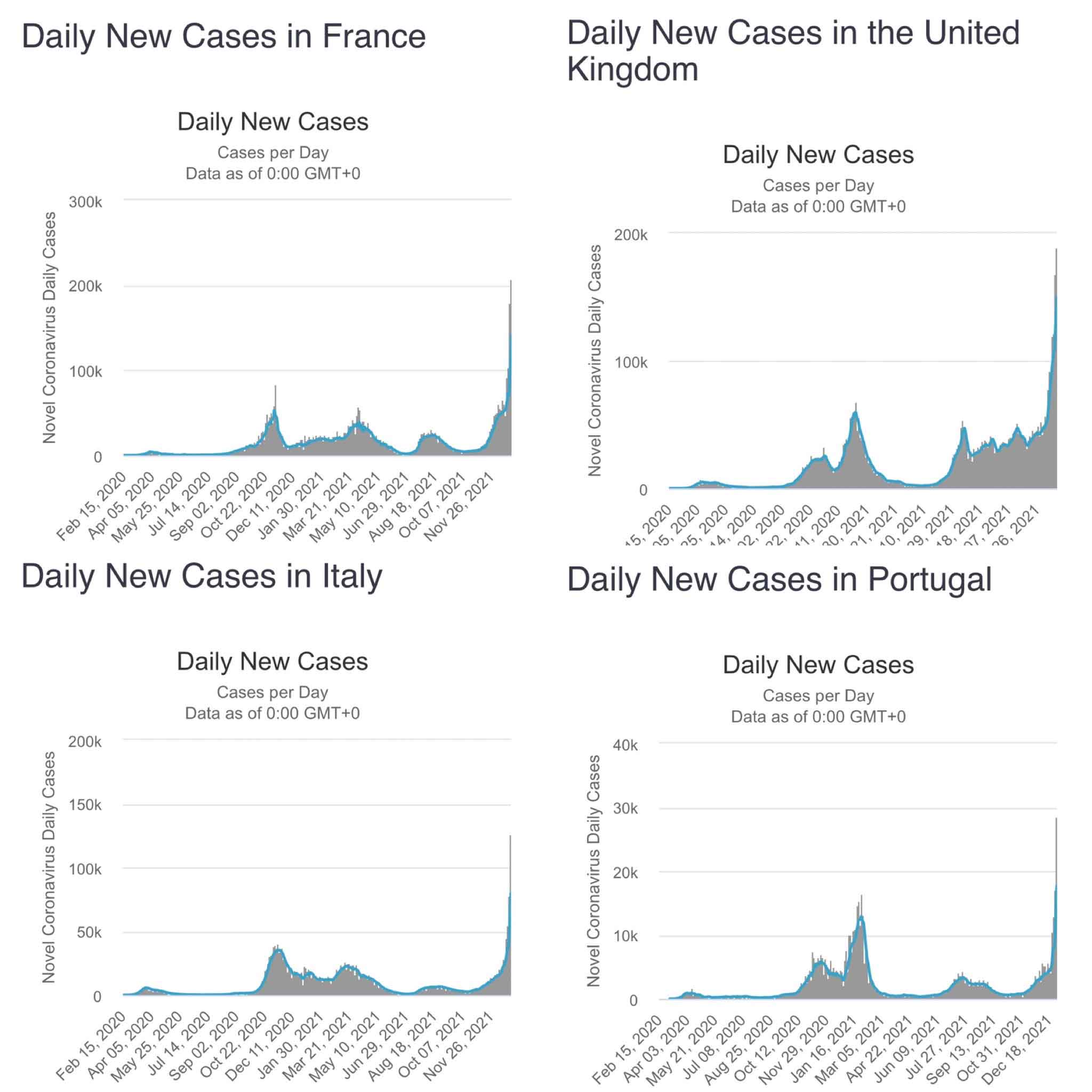As we start 2022 (HNY!) let’s jump in the time machine and look ahead a couple of weeks to what I think is in our immediate pandemic future.
To catch a glimpse of what’s coming here in the next 7-14 days, we need only look across the pond to Europe, which has been a great predictor thus far of what our Covid future looks like. For the whole of the pandemic, our Covid experience has trailed that of Europe by 2-3 weeks. Because of the quickened transmission and infection timeline of Omicron, we can likely shorten that to 7-10 days.Europe is not in a good place right now, closing out 2021 with record infection numbers that are still rising.
- France: 232,000 daily new cases
- UK: 190,000
- Italy: 145,000
- Portugal: 31,000

Portugal is extra concerning since it has the highest vaccination rate in the world at over 89%.
If you adjust these numbers for population, we are quickly headed to well over a million new Covid-19 infections per day. In fact, I believe we will be closer to 2 million per day by mid-January.
The good news is that Omicron does seem to present with less serious infections than Delta. This translates to a lesser risk of hospitalization or death per infection. But, at 1 – 2 million new infections per day, our already stressed healthcare system will break. Hospitals will not be able to handle the influx of Covid patients, and those that need other healthcare services will suffer. That also doesn’t tell the story of the 20 – 25% of Covid patients that suffer months of debilitating effects of long Covid. (Please don’t forget that long Covid can be an ADA-protected disability that you must reasonably accommodate.)
The other bad news? Masks (at least any masks other than N95/KN95/KF94 masks) may do very little to protect against Omicron.Even more bad news? Our exposure metrics on which we’ve relied for the past 21 months to determine close contacts — closer than 6 feet for 15 minutes or longer — don’t seem to hold true anymore. Omicron is just too contagious and lingers in the air for just too long.
So what should businesses be doing to prepare for the next few weeks of certain disruption?
1/ Strongly consider reverting to a work-from-home model for anyone who can do so for the foreseeable future. The less we are congregating together, the less chance we have to pass this highly contagious airborne virus between us.
2/ For those employees who have to work in-person — service workers, manufacturing, essential services — make N95/KN95/KF94 masks available. Keep in mind, however, that if you require them (the safest course of action) you must comply with OSHA’s respirator standard. Thus, unless you are prepared to become very conversant in a standard about which you likely know very little, I strong recommendation versus an actual mandate might make the most sense for most businesses.
3/ Keep pushing (or mandating) vaccines and boosters. They won’t protect against any illness, but they are still offering great protection against serious illness and death. Our healthcare system needs this, badly, so that our essential healthcare services remain open and available to all who need them.
4/ Prepare for absences and disruptions. Employees will get sick. Their kids will get sick. They will be absent, likely in large numbers. We’ve (hopefully) been flexible and understanding for the past 21 months; a few more weeks won’t break us.
The silver lining in all of this is that because of how fast Omicron moves, this will burn through us and burn out quickly, with some models suggesting as soon as late January. Almost certainly by some point in February, we should peak and start returning to “normal.”
By Spring and Summer 2022, things will look much different than they do now. But it’s going to be a dark and scary period until we get there. We need first to get through the Omicron blizzard that’s looming. Stay well, stay safe, and stay vigilant.

